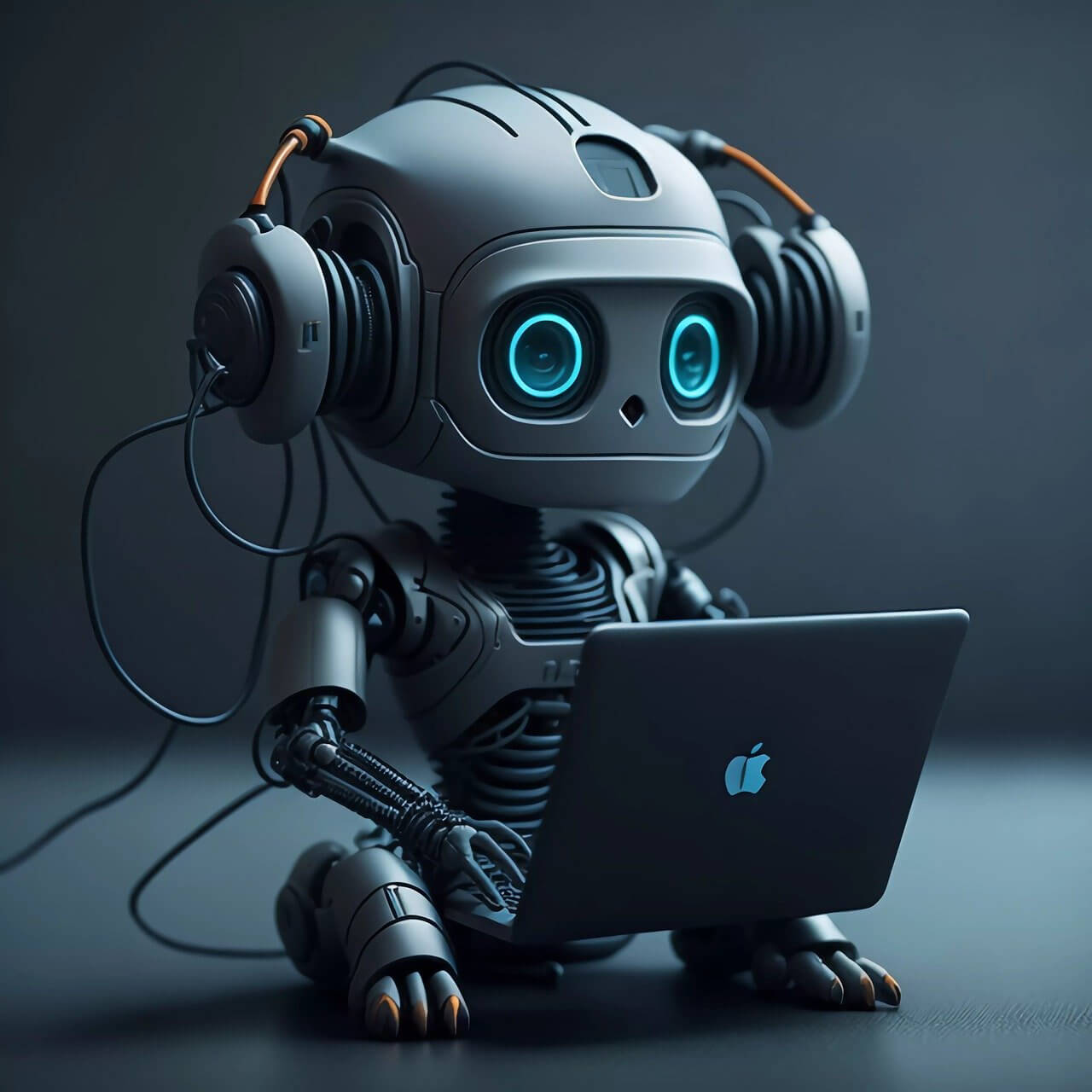What is Artificial intelligence (AI), How does (AI) work and How It is used to Artificial intelligence (AI).

Artificial intelligence (AI) is a cutting-edge field that encompasses a wide array of technologies and techniques aimed at creating intelligent machines capable of performing tasks that traditionally required human intelligence.
At its core, Artificial intelligence (AI) relies on the utilisation of algorithms and computational models to process and analyse vast amounts of data, enabling machines to learn from patterns and make predictions or decisions.
These algorithms employ a diverse range of techniques, including machine learning, neural networks, natural language processing, computer vision, and robotics, among others.
Machine learning is a branch of Artificial intelligence (AI) that focuses on the development of algorithms that enable machines to automatically learn and improve from experience.
Through the use of statistical models, machine learning algorithms can recognize patterns, extract valuable insights, and make accurate predictions. This process is particularly effective when dealing with large datasets, as it allows machines to identify complex relationships and uncover hidden patterns that may not be apparent to humans.
Neural networks, inspired by the human brain’s structure and functioning, are another key component of Artificial intelligence (AI). These networks consist of interconnected nodes, or artificial neurons, that process and transmit information. By training neural networks on vast amounts of data, they can learn to recognize patterns, classify objects, and perform tasks with increasing accuracy over time. Deep learning, a subfield of machine learning, harnesses the power of deep neural networks with numerous layers, enabling more sophisticated analysis and decision-making capabilities.
Natural language processing (NLP) By combining techniques from linguistics, computer science, and Artificial intelligence (AI), NLP enables applications such as speech recognition, language translation, sentiment analysis, and chatbots. These advancements have revolutionised human-computer interaction, making it more intuitive and user-friendly.
Computer vision is another crucial aspect of Artificial intelligence (AI), enabling machines to analyze and interpret visual information from images and videos. By using algorithms that can recognize objects, faces, gestures, and even emotions, computer vision has applications in various domains, including autonomous vehicles, surveillance systems, medical imaging, and augmented reality.
Robotics, when combined with Artificial intelligence (AI), enables the development of intelligent machines that can physically interact with their environment. These robots can
perform tasks that are dangerous, repetitive, or require precision and dexterity. They can be found in industries such as manufacturing, healthcare, agriculture, and exploration, and they hold the potential to reshape the way we work and live.
How does Artificial intelligence (AI) work
Artificial intelligence (AI) systems work by employing algorithms and computational models to process data, learn from patterns, and make predictions or decisions. Here is a simplified explanation of how AI works:
- Data Collection: Artificial intelligence (AI) systems require large amounts of data to learn and operate effectively. This data can be collected from various sources, such as databases, sensors, or the
- Data Preprocessing: Before the data can be used, it often needs to be This involves cleaning the data, handling missing values, normalising or scaling the data, and converting it into a suitable format for the AI algorithms.
- Algorithm Selection: Depending on the specific task or problem, different AI algorithms can be used. Machine learning algorithms, such as decision trees, support vector machines, or neural networks, are commonly The choice of algorithm depends on factors such as the nature of the data, the complexity of the problem, and the desired outcome.
- Training: In the training phase, the selected Artificial intelligence (AI) algorithm is fed with the preprocessed data. The algorithm learns from the data by adjusting its internal parameters or weights to optimise its performance. This process involves iteratively comparing the algorithm’s predictions or decisions with the actual known outcomes in the training data and updating the model
- Evaluation: Once the Artificial intelligence (AI) model is trained, it is evaluated using a separate set of data called the test set or validation set. This evaluation assesses the model’s performance, accuracy, and ability to generalise to new, unseen data. Various metrics, such as accuracy, precision, recall, or F1 score, can be used to evaluate the model’s
- Deployment: After the Artificial intelligence (AI) model has been trained and evaluated, it can be deployed for real-world This involves integrating the model into a system or software that can take input data and generate the desired outputs or decisions. The AI system may interact with users, analyse new data in real-time, or perform automated tasks based on its learned knowledge.
- Continuous Learning: Artificial intelligence (AI) systems can be designed to continually learn and improve their performance over time. This can involve periodic retraining of the model using new data or incorporating feedback loops that allow the system to adapt and update its knowledge based on user interactions or new
How It is used in Artificial intelligence (AI).
Artificial intelligence (AI) is used in various fields and industries to improve processes, enhance decision-making, and automate tasks.
- Healthcare: AI is used in medical imaging analysis to aid in the diagnosis of diseases, such as cancer, by detecting patterns and anomalies in medical images. It also helps in predicting patient outcomes, optimising treatment plans, and personalising medicine based on individual patient
- Finance: Artificial intelligence (AI) is employed in fraud detection and prevention, risk assessment, algorithmic trading, and credit scoring. It can analyse vast amounts of financial data and identify patterns or anomalies that humans may miss, helping financial institutions make informed decisions and mitigate
- Customer Service: AI-powered chatbots and virtual assistants are used to provide customer support and handle inquiries or complaints. These chatbots can understand and respond to natural language queries, offer personalised recommendations, and assist customers in finding information or making
- Transportation and Logistics: Artificial intelligence (AI) is used in route optimization for transportation and logistics companies, helping them find the most efficient routes, reduce fuel consumption, and optimise delivery schedules. Autonomous vehicles, such as self-driving cars and drones, rely on AI technologies for perception,
decision-making, and navigation.
- Manufacturing: Artificial intelligence (AI) is applied in robotics and automation to improve efficiency and productivity in manufacturing processes. Intelligent robots can perform complex tasks with precision and speed, leading to increased production rates and improved quality
- Natural Language Processing: Artificial intelligence (AI) enables natural language understanding and generation, powering applications like voice assistants, language translation, sentiment analysis, and text summarization. These technologies facilitate human-computer interaction and enable machines to understand and communicate in natural
- Smart Home Systems: Artificial intelligence (AI) is used in smart home devices to provide personalised experiences and automate routine tasks. Voice-activated assistants, like Amazon Alexa or Google Assistant, use AI to understand voice commands, control connected devices, and perform various functions, such as playing music or adjusting room
- Cybersecurity: Artificial intelligence (AI) is employed in cybersecurity to detect and respond to cyber threats in real-time. It can analyse network traffic patterns, identify abnormal behaviours, and flag potential security breaches. AI-based systems can also learn from past attacks to enhance their threat detection
- Education: Artificial intelligence (AI) is utilised in adaptive learning platforms that tailor educational content and activities based on individual student needs and learning It can provide personalised recommendations, assess student performance, and offer targeted feedback to optimise the learning process.
- Entertainment and Gaming: Artificial intelligence (AI) is used in the entertainment industry to enhance user Recommendation systems powered by AI algorithms suggest movies, shows, or music based on user preferences. In gaming, AI is used to create intelligent non-player characters (NPCs), generate realistic graphics, and enhance gameplay through adaptive difficulty levels.



